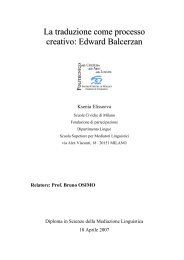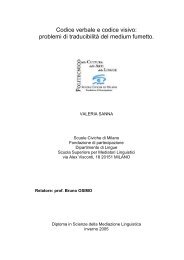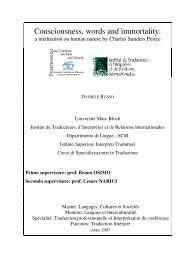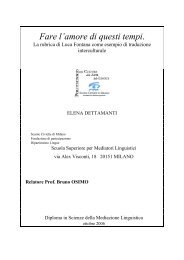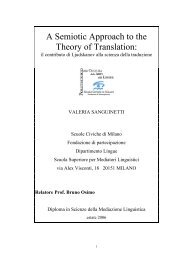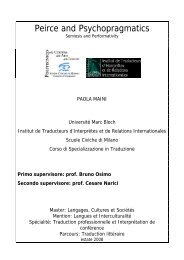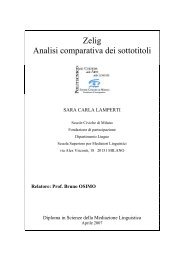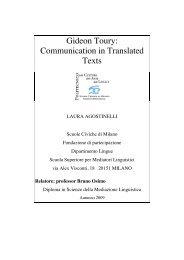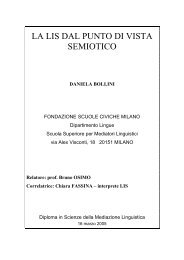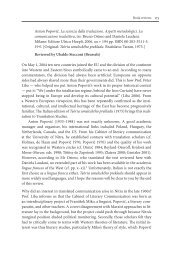Ksenia Elisseeva - Bruno Osimo, traduzioni, semiotica della ...
Ksenia Elisseeva - Bruno Osimo, traduzioni, semiotica della ...
Ksenia Elisseeva - Bruno Osimo, traduzioni, semiotica della ...
Create successful ePaper yourself
Turn your PDF publications into a flip-book with our unique Google optimized e-Paper software.
3.3. Finally, there are rules that pertain to the system's external use.<br />
Chess<br />
The rule “remove a piece after<br />
capturing it”; the time-limit, etc.<br />
Language<br />
The requirement that the speaker<br />
really believe what he says 1 .<br />
4. There are completely different violations for each of the types of rules<br />
cited, which witnesses indirectly to the differences between them.<br />
4.1. Rules of the 3.1. kind generally cannot be violated, for their violation<br />
results in violation of the system. It is true, as pointed out in the note to 3.1., that<br />
there are intermediate cases in language, such as grammatical government,<br />
whose violation brings us to 3.2.<br />
4.2.1. Rules of the 3.2.1. kind can of course be violated, most of all<br />
because, generally speaking, it is possible for the different participants to make<br />
use of them to a different extent. However, violation of these rules does not<br />
necessarily lead to reduced effectiveness. On the contrary, in chess, as in<br />
language, the creative but by no means unpremeditated violation of the 3.2.1.<br />
rules can exert a very powerful effect, as happened with hypermodernism in<br />
chess of the 1920s.<br />
4.2.2. Violation of the 3.2.2. rules is involved where orientation on the<br />
basis of mode1s plays a different role according to various inclinations 2 .<br />
4.3. Violation of the 3.3. rules can go unpunished if it is not noticed by the<br />
other participant and does not affect achievement of the goal set by the speaker<br />
or player; let us note that in the case of language the goal here is precisely to<br />
deceive the hearer; see 1.3.<br />
1 From our viewpoint, such rules do not pertain to the postulates of language but rather<br />
to the postulates of good sense; see Karpinskaâ, I. I. Revzin 1966: 34-36. For another<br />
viewpoint, see Wheatley 1970: 34, according to which language contains a semantic rule of the<br />
type, “A says: I promise X, entails: A intends X”.<br />
2 The author has devoted a special study to this question.<br />
46



